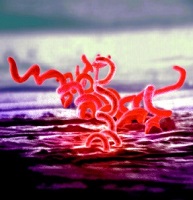
Harpal S. Mangat
Howard College of Medicine, Washington DC
Title: Correlation of Lyme disease with Immune Dysfunction
Biography
Biography: Harpal S. Mangat
Abstract
Background: Lyme disease is caused by the bacterium Borrelia burgdorferi, transmitted to humans through the bite of infected blacklegged ticks. CD4/CD8 ratios in healthy adults vary across populations; in the US, a CD4/CD8 ratio ranging from 0.9 to 1.9 is considered to be normal in non-immunocompromised individuals. Lyme disease is diagnosed based on symptoms, physical findings (eg. Rash) and the possiblity of exposure to infected ticks. Labratory testing is helpful if used correctly and performed with validated methods. The US Center for Disease Control (CDC) diagnostic criteria requires the identification of five Western blot IgG bands for a positive diagnosis1, although patients with less than five positive bands have been subsequently diagnosed with Lyme Disease through urine PCR in Nanotrap testing2. Material/methods: 183 patients at two medical centers were evaluated in Lyme endemic communities in Maryland, US. Further investigation of 148 of these patients correlated their CD4/CD8 ratio with their Ig41 band, using one and two tail testing. Results: The mean CD4/CD8 ratio in the 148 patients was 2.41 with a variance of 1.05 and a standard deviation of 1.025. Assuming a normal CD4/CD8 ratio of less than 2, with a 5% confidence interval, the p value on both a one tailed and two tailed test was shown to be 0.00001. Two patients with an initial CD4/CD8 ratio of 2.7 and 2.8 who were IgG 41 positive were subsequently tested with the Nanotrap Urine PCR and found to be positive for Lyme. Conclusions: Increased CD4/CD8 ratio with a positive IgG 41 band appears to be a strong predictor of a subsequent diagnosis of Lyme disease despite current diagnostic guidelines. Further research should not only be directed towards investigating how Borrellia Burgdoferi disrupts immune function, but also towards improving diagnostic guidelines in light of validated diagnostic methods.



